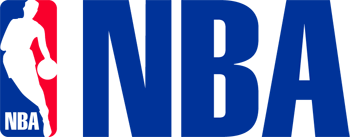NBA scores big in handling two race-related crises
A crisis can speak volumes about your company. But what does it say?
While a crisis generates enormous stress on an organization, it can also provide a very public opportunity to reinforce your mission to stakeholders. Organizations facing a communications crisis would be wise to consider the NBA’s masterful handling of two PR nightmares this year.
The NBA no doubt preferred to have the offseason spotlight focused on player moves – didn’t LeBron James change his address? – and the United States’ quest for a title at the FIBA World Cup in Spain. But the league was forced to confront two race-related controversies, and its responses were on point and can serve as a how-to guide for other organizations.
The first crisis erupted in April, when a recording of racist comments by Los Angeles Clippers owner Donald Sterling was made public. Sterling’s comments would be repulsive to any sports organization, but especially one whose players are predominantly African-American.
Shortly after Sterling’s comments became public, new Commissioner Adam Silver appeared at a news conference before a playoff game in Memphis. In an even-handed tone, Silver announced that the league would begin an immediate investigation into the comments and that Sterling would not attend the Clippers’ playoff game at Golden State the following day.
Many in the media demanded immediate sanctions against Sterling, but Silver made it clear that the league would follow a process. His calm, poised demeanor established immediate public trust in that process.
Three days later, amid a deafening public outcry, Silver announced that he was banning Sterling for life and fining him $2.5 million – and that he would exercise his authority to force the sale of the team.
“The views expressed by Mr. Sterling are deeply disturbing and alarming,” Silver told reporters. “This has been a painful moment for all members of the NBA family.”
The NBA has posted a detailed Sterling timeline on its website, including links to stories that might not be deemed “positive” but help put the issue in content. The league decided to make its website a resource for anyone researching the topic, creating a sense that it is dedicated to transparency.
http://www.nba.com/2014/news/08/12/sterling-timeline/
The Sterling controversy had barely moved out of the headlines when another race-related crisis arose last weekend. The owner of the Atlanta Hawks, Bruce Levenson, announced that he was selling his controlling interest in the team because of a two-year-old e-mail in which he expressed racial stereotypes about the club’s fan base.
The NBA learned of the e-mails in July and had begun an investigation.
"The views he expressed are entirely unacceptable and are in stark contrast to the core principles of the National Basketball Association," Silver said in a statement. "He shared with me how truly remorseful he is for using those hurtful words and how apologetic he is to the entire NBA family – fans, players, team employees, business partners and fellow team owners – for having diverted attention away from our game."
Silver used the NBA’s latest crisis to reinforce its policies regarding the workplace environment of its clubs. “The NBA and its teams have long had in place anti-harassment and anti-discrimination policies in order to facilitate respectful and diverse workplaces,” the commissioner said in a statement. “Earlier this summer, the league re-doubled its efforts by, among other things, making it mandatory for all league and team personnel to receive annual training on these issues."
The NBA will no doubt be relieved to have these crises behind it. But its deft handling of both episodes means that the focus can return to the basketball court when training camps open across the country later this month.




















